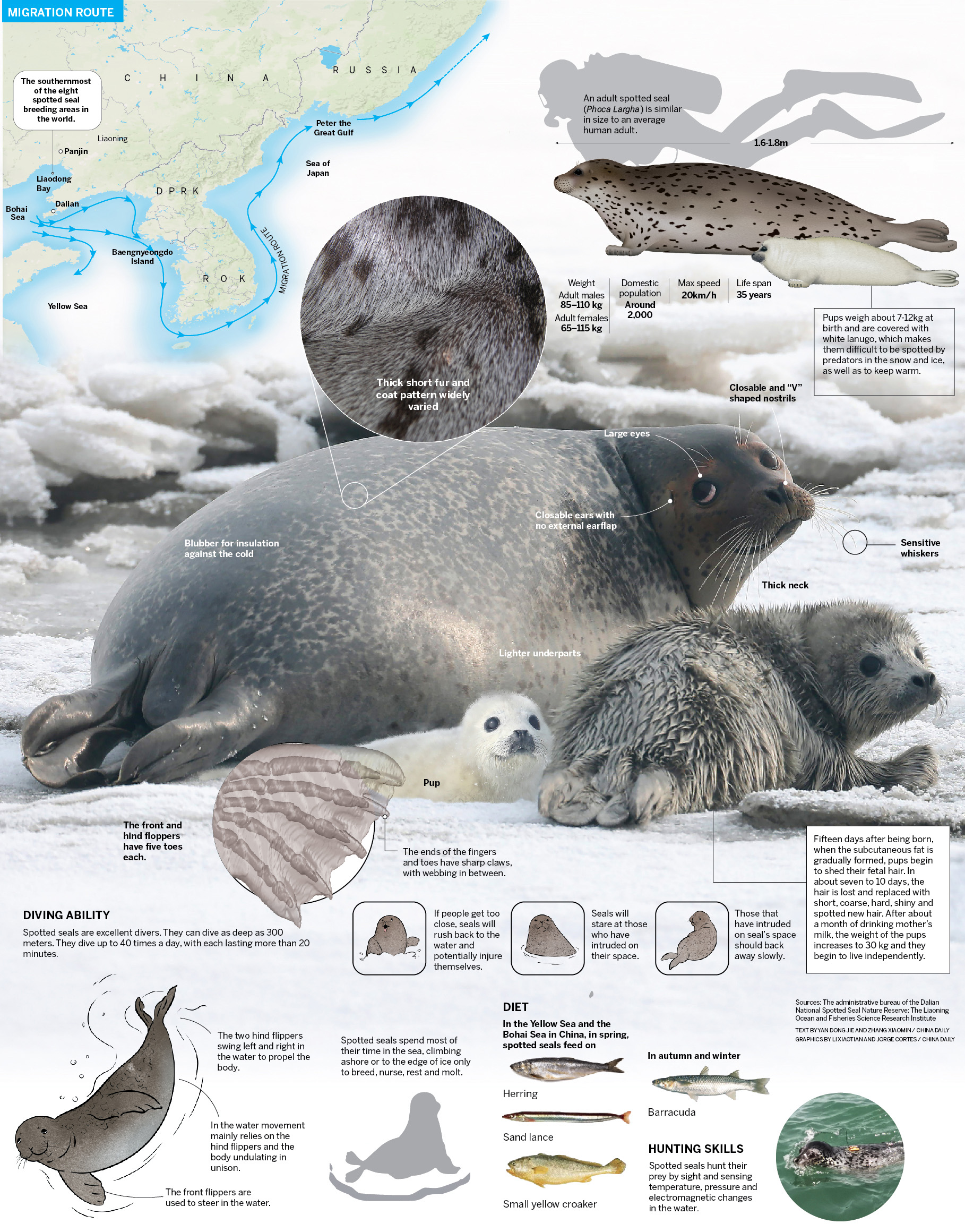As designated day for protecting the mammal arrives, improved wetlands see more returning to Liaodong Bay

Editor's Note: As protection of the planet's flora, fauna and resources becomes increasingly important, China Daily is publishing a series of stories to illustrate the country's commitment to safeguarding the natural world.
Volunteers at the Liaohe River Estuary National Nature Reserve counted a record 393 spotted seals on March 25, the highest number in recent years, according to the Panjin Forestry and Wetland Protection Management Bureau.
"Over the past week, we have been able to observe over 200 spotted seals from the Western Pacific basking in the sun on the mudflats every day," said Tian Jiguang, founder of the Panjin Wetland Protection Association in Panjin, Liaoning province.
According to the observations of Tian's team, who counted the spotted seals daily from high-definition images taken by drones, the population of Western Pacific spotted seals in Liaodong Bay was 181 in 2021, 253 in 2022 and 302 last year. The number of spotted seals observed this year has increased by 30 percent compared to 2023.
In February 2021, the State Forestry and Grassland Administration and the Ministry of Agriculture and Rural Affairs increased the national protection status for Western Pacific spotted seals from level II to level I. The following year, the date April 16 was designated as China's National Spotted Seal Protection Day to promote the conservation of the marine mammal. Tuesday marked the third such day.
The spotted seal, or Phoca largha, is known as the "Spirit of the Bohai Sea". Similar to bird migration, they can be observed in Liaodong Bay from around October each year. The following May, after breeding, the seals embark on the long journey back to the Pacific.
Officials from the bureau of agriculture and rural affairs in Panjin's Panshan county said in recent years they have carried out the "returning farmland to wetlands" initiative, restoring 34,780 hectares of coastal wetlands. This initiative has created a favorable breeding and habitat environment for the Western Pacific spotted seals that migrate annually.
Spotted seals primarily feed on fish and cephalopods, with their main diet in the reserve being saury fish and crustaceans.
"Thanks to the favorable natural environment and abundant marine resources here, and the absence of predators, the winter sea ice serves as a natural birthing ground for the spotted seals," said Tian.
Some 200 kilometers to the south from the Liaodong Bay coast in Panjin, a national-level protection area dedicated to spotted seals has been in place for more than two decades in the waters off the city of Dalian, covering some 560,000 hectares.
The observed population of spotted seals at two vital habitats — Xizhuangshi and Shixianjiao — has reached over 560 in recent years, showing an increasing annual trend, according to sources from the administrative bureau of the Dalian National Spotted Seal Nature Reserve.
Contact the writers at yandongjie@chinadaily.com.cn


